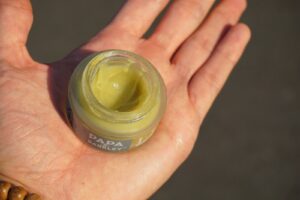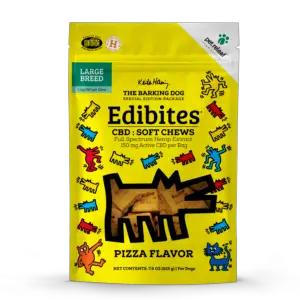
Key points
- Neosporin is the brand name for a topical antibiotic that is typically used to prevent infection on minor skin wounds such as cuts, scratches, and burns;
- Although Neosporin is primarily meant for use in humans, it can also be safe for dogs if used in small amounts;
- You should never apply Neosporin to your pets’ eyes or ears, as this can result in hearing loss, inflammation, infection, or itchiness;
- If your pet has a deep or large wound, you should use medication designed specifically for use in animals;
If your dog has scratches, scrapes, or other external wounds, you might be wondering if an ointment like Neosporin could help them heal faster. Would it work on your pup since it works so well on humans?
Small amounts of Neosporin are generally safe for dogs if prescribed by a vet. However, there are a few things you should be aware of. Below, we will talk about everything you need to know when treating your dog with Neosporin and discuss the possible risks and alternatives to the medication.
Table of Contents
What is Neosporin?

Neosporin is the brand name for a common topical antibacterial ointment that contains three antibiotics: neomycin, polysporin, and bacitracin. The combination of these antibiotics is effective against a variety of bacteria.
Neosporin is an over-the-counter drug, which means it does not require a prescription. This medication is intended to prevent and treat minor skin infections caused by small cuts, scratches, or burns. However, it does not affect infections caused by other foreign organisms such as fungi, parasites, or viruses.
There are a few issues related to the use of this medication. First of all, the more popular topical antibiotics become, the more concerns arise about the increased bacterial resistance that they cause. Apart from resistance, prolonged use of neomycin can cause hearing loss. Also, Neosporin has not been approved by the FDA for use in canines.
Can You Use Neosporin on Dogs?
Neosporin is widely used to treat minor cuts or skin infections in humans, which is why dog owners often consider using the medication to treat their dogs. But, remember, it’s best not to use any over-the-counter medications designed for humans on your dog without first consulting with a veterinarian.
While Neosporin is considered to be safe for minor cuts and scratches in canines, it’s not the best treatment option you can choose for your dog. When used in small amounts, Neosporin can prevent further infection and facilitate the healing process. However, remember that Neosporin can be used only on the areas your dog can’t reach with its tongue since it is dangerous for pets to consume the medication due to the possible unpleasant gastrointestinal side effects.

If you cannot prevent your dog from licking the affected area, you should substitute Neosporin for other medication. Never use Neosporin on your pet’s eyes, ears, or mouth. You also shouldn’t apply the ointment to large areas of a dog’s body or use it on large and deep wounds.
The bottom line is that the Neosporin website states, “We do not recommend the use of these products on animals.” There are many healing medications made specifically for dogs. These products are safer and more effective than the human triple antibiotic, so it’s a good idea to use them instead.
Neosporin Safety For Dogs
As mentioned earlier, you need to contact your veterinarian before administering any medication to your dog. When using Neosporin on dogs on your veterinarian’s approval, keep the following in mind:
- Apply the ointment to a tiny area of the skin first to check for possible allergic reactions. Some dogs experience contact dermatitis, meaning that the site where the ointment was applied gets inflamed. Other possible symptoms of an allergic reaction may include redness, hives, and itching in the area. If you observe these in your dog, clean any residual ointment off the skin and stop using Neosporin. If you observe more serious side effects such as difficulty breathing and face swelling, immediately take your dog to a vet.
- You should never use this medication on your dog’s eyes or ears. When applied to wounds on the ears, Neosporin might damage the eardrum and intensify the existing infection.
- You should also avoid mixing Neosporin with triple antibiotic ophthalmic ointment. Neosporin will only worsen your dog’s ophthalmic issues. Instead, you should visit a veterinary clinic if your dog has problems with its eyes.
- Use the ointment only topically. Neosporin is not safe for your dog if swallowed, and it can cause stomach upset, vomiting, diarrhea, and loss of appetite. If your dog has a habit of licking its wounds, you can wrap the injury site in a bandage or an old sock after applying the ointment. You can also use an Elizabethan collar to prevent the pet from consuming Neosporin. Licking the cut or scrape can also intensify the growth of bacteria due to additional moisture from your dog’s mouth.
- Always opt for the standard strength Neosporin and avoid extra-strong varieties that contain additional active ingredients for pain relief.
How to Use Neosporin on Dogs?

Some dogs are so lively and curious that they regularly get cuts, scratches, and other wounds. Each pet owner needs to know what to do when these accidents occur and be prepared for an emergency that requires home care. Experts even recommend keeping a first aid kit for your dog at home.
Sometimes, it can be challenging to determine the extent of the pet’s injury or figure out how to deal with it. If the damage exceeds a small cut or abrasion, you should contact your veterinarian immediately. Remember that Neosporin should be used only on minor scrapes and cuts or bug bites.
Here are all the steps you need to take when you notice that your pet is injured:
- If you see that your pet is bleeding, apply direct pressure on the cut. Applying pressure helps blood to clot and stops the bleeding. You can use a piece of cloth or a paper towel to do this.
- Isolate the wound. Your dog may have more than one cut. Check your dog’s entire body, including the paw pads, for injuries.
- Rinse the wound. This includes rinsing the area with warm water and/or saline solution to remove dirt, debris, and possibly foreign objects. This can be done with a large syringe, which is included in most dog first aid kits. Avoid touching the affected area with the syringe since this may cause further irritation. The pet’s fur that covers the wound often makes it difficult to judge how severe the cut on your dog is. If you discover that the injury is more significant than a small cut or abrasion after flushing it, check with your veterinarian before proceeding to the next step.
- Dry the wound before using Neosporin. As always, you should consult your veterinarian for proper dosage and instructions before giving any medications to your dog. In the case of Neosporin, usually, the best solution is to apply a thin layer of the medication to your pet’s skin one to three times a day.
- After administering Neosporin, wrap the wound so that your dog doesn’t ingest the ointment or irritate the area by licking it.
Keep in mind that you should not try to heal post-surgery wounds with Neosporin. Since antibiotics are usually used during the surgery, no additional wound care is needed.
Monitor your dog’s cut thoroughly for the next few days or until the wound appears to be visibly healing. You can also take photos of the injury every day and share them with your veterinarian so they can adjust the treatment plan.
Side Effects of Neosporin for Dogs
Just like all other medications, Neosporin can have an adverse effect on your pet, so it’s important to closely observe your dog when treating it with this medication. Here are some things you need to watch out for:
Allergic reaction
Although these cases are rare, some dogs may experience an allergic reaction to Neosporin. To avoid this, test the antibacterial ointment on a small area of your dog’s skin to make sure the pet isn’t too sensitive to it. If you notice that the affected area becomes swollen, red, or starts secreting a liquid, you need to seek a veterinarian’s assistance instead of trying to help your dog at home.

Infections
Using too much Neosporin can lead to other infections caused by fungi and other organisms. Excessive use of the ointment can also cause your pet to develop a resistant infection.
Irritation and hearing loss
If you apply Neosporin to your dog’s eyes, it will cause irritation. And if the ointment gets into your pet’s ears, it can cause hearing loss, infection, and irritation.
Vomiting and diarrhea
If your dog accidentally ingests Neosporin, it may develop gastrointestinal symptoms such as vomiting and diarrhea. Contact your veterinarian as soon as possible if you think your dog has accidentally eaten this or any other medication.
Do not use Neosporin together with other topical medications unless your vet advises you to do so. The best way to avoid these unwanted reactions and side effects is to closely follow your vet’s instructions.
Neosporin Alternatives for Dogs
Sometimes, the best treatment is to do nothing. If your dog has insignificant scrapes or bumps on the skin, you can let them heal independently, as a minor wound most likely won’t get infected or inflamed. You should also keep in mind that your pet’s healing abilities are significantly better than yours. By licking the affected area, canines encourage faster wound healing since their saliva has bactericidal properties. Of course, professional treatment is required for large wounds and scabs that already appear infected. However, people often tend to overreact when it comes to their pets.

If your pet is suffering from a deep wound, you can use dozens of topical antibacterial treatments available on the market. Some examples include silver sulfadiazine (SSD) ointment, bacitracin ointment, and polysporin ointment. Although they all are primarily meant to be used in humans, these ointments are considered to be safe for pets as well.
In addition to this, pet stores and your veterinary clinics sell medications specifically designed for animals. You can ask your vet which option will be most suitable for your dog.
Another effective and natural solution is organic virgin coconut oil. While it’s not a medication, coconut oil is well-known for its potent soothing and protecting properties. Furthermore, it is completely safe for your dog to consume it. In addition to this, the lauric acid in the oil can be very effective at defending your dog against various bacteria, microbes, and fungi. You can use it on small cuts, wounds, rashes, and bug bites.
FAQ
Is it safe to put Neosporin on a dog?
Although Neosporin is a human medication, it is considered to be safe for topical use in dogs. Make sure that you administer only a tiny amount of the ointment and use it only on parts of the body where your dog won’t be able to lick the ointment off.
What happens if a dog licks Neosporin?
If your dog happens to ingest Neosporin, it might experience gastrointestinal issues such as vomiting and diarrhea. Try covering the wound with a bandage so that your pet doesn’t eat the medication.
How often can I apply Neosporin to my dog?
Typically, a thin layer of Neosporin is applied to the wound one to three times a day.




